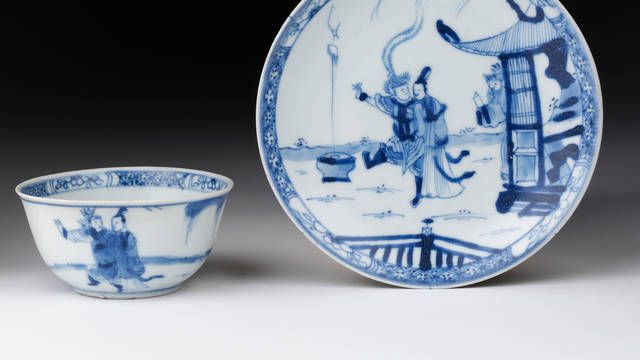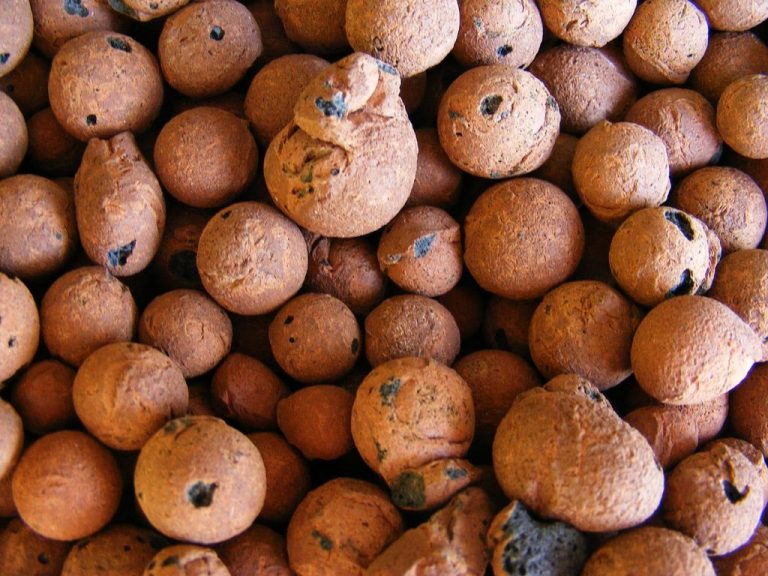What Are The Four 4 Types Of Ceramics List And Define?
Ceramics are inorganic, non-metallic materials that are essential for modern society. They are made by shaping clay or other minerals and firing at high temperatures to achieve desirable properties. There are four main types of ceramics: earthenware, stoneware, porcelain, and bone china. Each type has distinct characteristics based on different compositions and manufacturing processes.
Earthenware is a porous, opaque ceramic that fires at lower temperatures. It’s the most basic and oldest type of pottery used for items like flower pots and decorative pieces. Stoneware is less porous, harder, and more durable. It fires at higher temperatures and is commonly used for pottery and cookware. Porcelain is highly refined, translucent, and fired at the highest temperatures. It’s known for strength, whiteness, and resistance to thermal shock. Bone china contains bone ash to increase whiteness and translucency. It’s extremely thin, light, and delicate. While the four types share some traits, their unique properties lend themselves to different applications.
Earthenware
Earthenware is a type of ceramic made from clay fired at low temperatures between 1,000-1,150°C. It is opaque, can be glazed or unglazed, and is slightly porous. Earthenware dates back over 10,000 years and was one of the earliest types of pottery made by ancient cultures around the world.
The key properties of earthenware are that it is opaque, permeable to liquids, and has a distinct reddish-brown color from iron oxide in the clay. It can be painted, glazed, or left unglazed. Glazes provide a non-porous decorative surface and make it suitable for items like plates and mugs. Unglazed earthenware absorbs liquids and is better suited for pots and vases.
Common uses of earthenware include flower pots, crockery and ceramics, decorative vases and bowls, and roof tiles. It is cheaper to produce than stoneware or porcelain. The porosity of earthenware makes it suitable for cooling water in hot climates, which is why it has been used for thousands of years around the world for basic functional pottery, cookware, and storage vessels.
Stoneware

Stoneware is a type of clay pottery that is fired at high temperatures between 2,200 and 2,400 degrees Fahrenheit, making it dense, nonporous, and able to withstand high heat before fracturing (1). The high firing temperature causes the clay to vitrify, meaning the silica in the clay begins to fuse and form glass, sealing the pores (2).
Some typical properties of stoneware include (3):
- Vitreous with very low porosity.
- Resistant to liquids, able to hold water without leaking.
- Opaque with colors that go through the entire body.
- Sturdy and durable but brittle when thin.
Stoneware is commonly used to make ovenware such as baking dishes, mugs, vases, and other functional items. The nonporous nature allows it to withstand repeated heating and cooling without cracking. Glazes are often applied for decoration and to create a glassy surface that is impervious to water. Stoneware glazes melt at lower temperatures than the body, so they fuse to the clay surface when fired (3).
Sources:
(1) https://www.shstoneware.com/blog-what-is-stoneware/
(2) https://en.wikipedia.org/wiki/Stoneware
(3) https://digitalfire.com/glossary/stoneware
Porcelain
Porcelain is a ceramic material made by heating materials like kaolin clay to high temperatures between 1,200°C and 1,400°C (Britannica, 2022). The raw materials vitrify and become non-porous with a white, fine-grained body that is usually translucent (Merriam-Webster, 2022).
Porcelain is known for its high strength, low porosity, whiteness, translucency and resonance (Wikipedia, 2022). It is harder and denser than normal pottery due to the high firing temperatures. The non-porous nature makes it impermeable to water while also having high resistance to thermal shock.
Porcelain has many uses including tableware, sanitaryware, electrical insulators, dental prosthetics and more. Tableware like plates, bowls and tea sets make up a large portion of porcelain usage. The durability, aesthetics and inert nature make it ideal for food contact. In dentistry, porcelain is used for false teeth due to its lifelike appearance and hardness.
Bone China
Bone china is a type of ceramic made from bone ash, feldspathic material, and kaolin clay. The key ingredient that sets it apart from other ceramics is the addition of bone ash, which comprises 50% of the material. This gives bone china a very fine, white, translucent appearance.
The bone ash is made by burning animal bones, usually cow bones, at very high temperatures above 1000°C. This reduces the bones to a phosphate of lime compound called tricalcium phosphate. Adding this bone ash makes the ceramic more flexible, durable, and gives it a high mechanical strength compared to other ceramics. However, it also makes bone china thinner and more delicate compared to porcelain.
Bone china is known for its smooth surface, high whiteness, translucency and high-quality glaze. It was first developed in England in the late 18th century as an attempt to produce a ceramic material to rival the fine imported porcelain from China. Bone china is now commonly used to create high-end tableware like plates, teacups, and saucers due to its elegance and beauty. It is also popular for figurines and ornaments.
Comparisons
The four main types of ceramics – earthenware, stoneware, porcelain, and bone china – have some similarities as well as key differences that affect their properties and uses.
Earthenware is the most basic type of pottery, made from clay bodies fired at lower temperatures typically between 1700-2000°F. It is porous and coarser than other types of ceramics. Stoneware is denser and less porous than earthenware due to higher firing temperatures between 2100-2400°F. Stoneware has increased strength and durability. Porcelain is the strongest ceramic because it is fired at very high temperatures up to 2600°F, making it vitreous with almost zero porosity. Porcelain is smooth, durable, and translucent. Bone china is made by combining kaolin clay with bone ash, resulting in a very white, delicate, and translucent material. Due to its high kaolin content, bone china can be fired at lower temperatures around 2300°F.
In terms of appearance, earthenware and stoneware have an opaque, matte look while porcelain and bone china are more translucent and glossy. For permeability, earthenware is the most porous allowing absorption while vitreous porcelain and bone china are impermeable to liquid. Regarding durability, porcelain is extremely strong compared to more delicate earthenware and bone china. For color after firing, earthenware can have bright colors but stoneware, porcelain and bone china are white/off-white.
In summary, earthenware is basic, porous and coarse; stoneware is dense and durable; porcelain is vitreous, impermeable and very strong; while bone china is translucent, delicate yet durable. Knowing the characteristics of each ceramic type allows selection of the optimal material for applications ranging from dishware to technical ceramics.
Manufacturing
Ceramics manufacturing is a complex process with many steps. The basic steps include raw material procurement, mixing, forming, drying, firing, and finishing. Depending on the type of ceramic product being made, some steps may be added or skipped.
The manufacturing process starts with procuring the raw materials. These include naturally occurring minerals like clay, quartz, and feldspar that must be mined from the earth. Synthetic materials like alumina and zirconia can also be used. The raw materials are milled and refined to achieve the desired chemistry and particle size.
The milled raw materials are then batched, combined according to a recipe, and mixed thoroughly with water to create a slurry. The slurry is then formed into the desired shape using methods like slip casting, injection molding, extrusion, or pressing. Complex shapes may require additional steps like green machining.
After forming, the green body contains 15-30% water and is soft and fragile. It must be dried carefully to remove the remaining moisture before firing. Firing, or sintering, heats the piece to high temperatures (over 1,000°C) to fully densify the ceramic through vitrification and create the final product. Additional steps like glazing, decoration, and final machining can be done after firing.
The specific steps and parameters vary widely based on the type of ceramic, product shape, and end use. But this provides an overview of the common manufacturing phases for most ceramic materials.
Decorating
There are many common techniques used to decorate ceramics. Some of the most popular methods include:
- Brushing – Applying colored glazes, slips, engobes, or underglazes onto ceramics using a brush. This allows for freehand designs. (https://www.goldmarkart.com/blogs/discover/10-types-ceramic-decoration)
- Sponging – Using a natural or synthetic sponge to dab glazes onto the surface to create mottled textures and effects.
- Stamping – Pressing carved rubber stamps into clay or overglaze to imprint patterns and imagery.
- Stenciling – Using stencils to create designs in glazes, slips, and underglazes. The stencil blocks areas from being coated.
- Screen printing – Pushing glaze through a silkscreen onto the ware to print images and designs.
- Combing – Dragging a ceramic decorating comb through slipped or glazed surfaces to create lined patterns.
- Sgraffito – Scratching through a colored slip to reveal the clay body underneath for a linear look.
- Inlay – Pressing colored clays into carved areas to contrast with the base clay color.
There are many other techniques like banding, feathering, sprigging, and more that allow for creative decoration on ceramic wares. Modern decorators are also coming up with innovative approaches by combining these traditional methods. (https://ceramicartsnetwork.org/daily/ceramic-decorating-techniques)
Applications
Ceramics have many diverse applications due to their unique properties. The four main types of ceramics each tend to be used for different purposes.
Earthenware is one of the most common types of pottery. It is opaque, porous, and coarse in texture. Major uses of earthenware include flowerpots, dishes, mugs, pitchers, and decorative pottery. Its porous nature makes it unsuitable for liquids but good for baking dishes.1
Stoneware is dense, hard, and nonporous. It can withstand high temperatures so it is often used to make ovenware such as casserole dishes, baking dishes, and pizza stones. Its low absorbency also makes it good for plates, mugs, and vases. Other uses include art pottery and industrial applications like electrical insulators.2
Porcelain is known for its whiteness, translucency, and strength. Tableware and decorative items like vases and figurines make up a large portion of porcelain applications. It is also used for electrical insulators, dental implants, and advanced technologies due to its high resistance to thermal shock. 1
Bone china is made from bone ash, giving it high whiteness and translucency. It is commonly used for high-end tableware like tea sets, plates, and luxury serveware. Its delicate nature also makes it ideal for detailed figural sculptures and decorative items.2
Conclusion
In summary, ceramics is an ancient and diverse material that continues to play an important role in both art and industry today. The four main types – earthenware, stoneware, porcelain and bone china – have unique properties and manufacturing processes that make each suitable for different applications. While some ceramics are purely decorative, others have become essential for modern technology and infrastructure. The history of ceramic art and design reflects evolving cultures across the globe. Master potters and ceramic artists continue to push the boundaries of what can be created with this versatile medium.
In conclusion, ceramics offer limitless creative potential combined with functionality. As manufacturing techniques and artistic styles continue to advance, ceramics will remain integral to human civilization.


